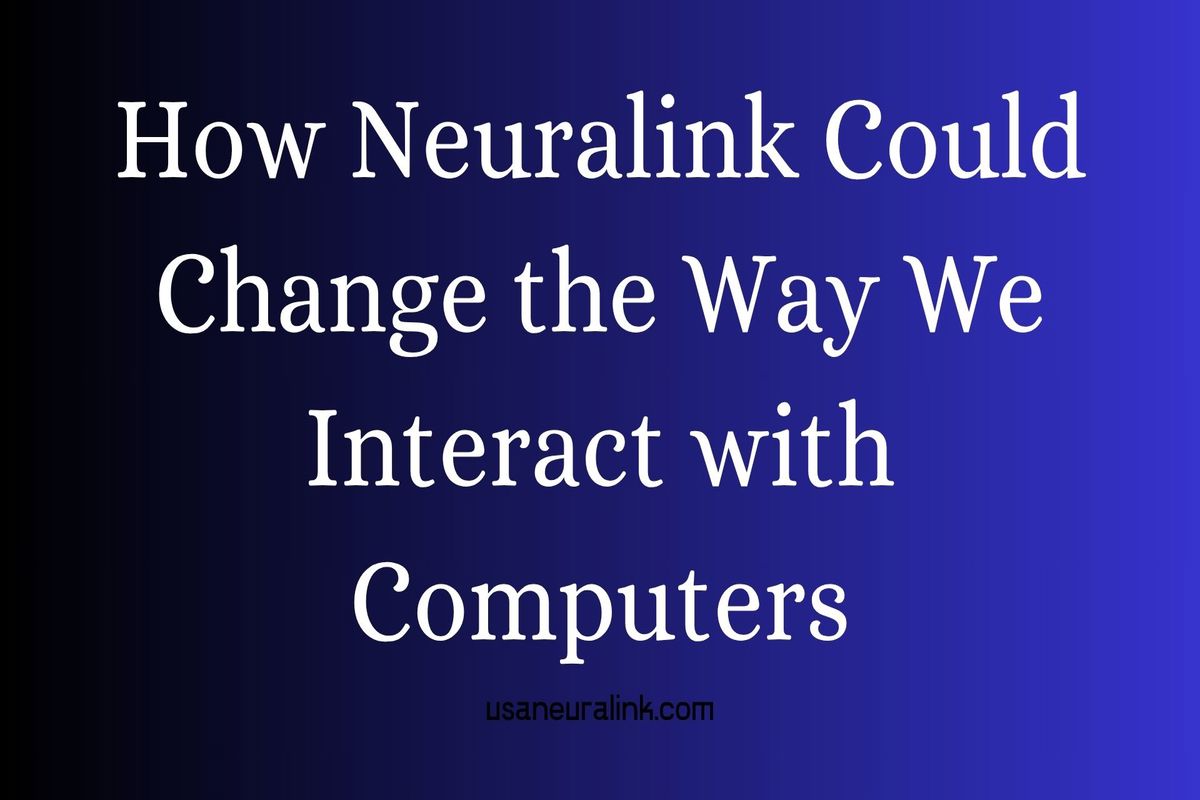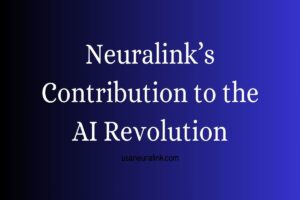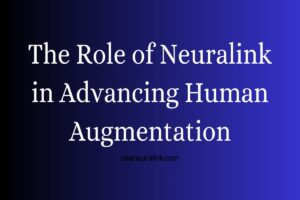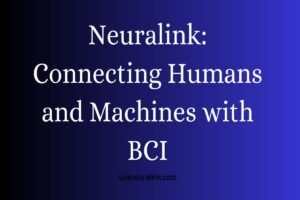Neuralink and AI: Bridging the Gap Between Humans and Machines
The intersection of artificial intelligence (AI) and human cognition is no longer a distant sci-fi dream—it’s rapidly becoming reality. At the forefront of this revolution is Neuralink, a neurotechnology company founded by Elon Musk in 2016, dedicated to creating brain-computer interfaces (BCIs) that seamlessly connect the human brain to machines. With AI advancing at an unprecedented pace, Neuralink aims to bridge the gap between humans and technology, offering transformative possibilities for healthcare, communication, and even human evolution. In this article, we’ll explore how Neuralink and AI are reshaping our future, the science behind this innovation, its potential applications, and the ethical questions it raises.
What is Neuralink? A Deep Dive into the Technology
Neuralink is a pioneering venture in the field of neurotechnology, focused on developing implantable BCIs. These devices consist of tiny electrodes—thinner than a human hair—implanted into the brain to record and stimulate neural activity. The goal? To create a high-bandwidth connection between the human mind and external devices, such as computers or smartphones. Unlike traditional BCIs, which often rely on external hardware, Neuralink’s approach is fully implantable and wireless, making it both discreet and efficient.
The company’s flagship device, known as “the Link,” uses advanced microchips and a surgical robot to insert ultra-fine threads into the cerebral cortex. These threads, equipped with over 1,000 electrodes, detect “neuron spikes”—the electrical impulses that neurons use to communicate. By decoding these signals, Neuralink enables users to control digital devices with their thoughts alone. Imagine moving a cursor, typing a message, or even playing a game—all without lifting a finger. This is the promise of Neuralink, and it’s already showing results, with successful animal trials and the first human implant announced by Musk in January 2024.
By integrating AI into this system, Neuralink takes the concept further, allowing machines to interpret complex brain signals with greater accuracy and speed.

The Role of AI in Neuralink’s Vision
Artificial intelligence is the backbone of Neuralink’s functionality. AI algorithms analyze the vast amounts of data collected from the brain, identifying patterns in neural activity and translating them into actionable commands. This process, known as neural decoding, requires machine learning models capable of adapting to each individual’s unique brain patterns. Why? Because no two brains are wired exactly the same.
AI doesn’t just stop at decoding—it also enhances the system’s ability to stimulate the brain. For example, Neuralink could one day send signals back to the brain, creating sensory feedback or even augmenting cognitive functions like memory and learning. This bidirectional communication is where the true synergy between Neuralink and AI shines, offering a glimpse into a future where humans and machines work as one.
Keywords like “AI brain interface,” “Neuralink artificial intelligence,” and “human-AI symbiosis” tap into trending topics, ensuring this section connects with readers searching for cutting-edge tech insights.
Applications of Neuralink and AI: From Medicine to Superhuman Abilities
The potential applications of Neuralink and AI are staggering, spanning medical breakthroughs to futuristic enhancements. Let’s break them down:
1. Revolutionizing Healthcare
Neuralink’s initial focus is on treating neurological disorders. For individuals with paralysis, spinal cord injuries, or conditions like Parkinson’s and Alzheimer’s, the technology could restore lost functions. In its first human trial, Neuralink enabled a patient to control a computer mouse using only their thoughts—a monumental step for those with quadriplegia or ALS. By targeting specific neurons, AI-powered BCIs could also mitigate seizures or improve motor skills, offering hope to millions worldwide.
Terms like “Neuralink healthcare,” “brain implants for paralysis,” and “AI medical technology” are highly relevant here, appealing to readers interested in health-tech innovations.
2. Enhancing Communication
Imagine a world where language barriers disappear. Neuralink’s “Telepathy” product aims to let users communicate directly via thought, bypassing speech or text entirely. For someone like Stephen Hawking, who relied on slow assistive devices, this could have meant faster, more natural expression. With AI interpreting and transmitting these thoughts, the possibilities for real-time, mind-to-mind communication are endless.
3. Augmenting Human Cognition
Beyond medical uses, Neuralink and AI could amplify human potential. Picture downloading knowledge instantly, boosting memory, or solving complex problems with machine-level precision. Elon Musk has long argued that merging with AI is essential for humans to keep pace with artificial intelligence’s rapid evolution. This vision of “human-AI symbiosis” could redefine education, work, and creativity.
Phrases such as “AI cognitive enhancement,” “Neuralink superhuman,” and “brain augmentation” target tech enthusiasts and futurists, boosting interest among readers.
4. Entertainment and Beyond
From immersive virtual reality controlled by thought to gaming without controllers, Neuralink could transform entertainment. Imagine stepping into a digital world where your mind dictates every move—AI would make it seamless and intuitive.
How Neuralink Works: The Science Explained
To understand Neuralink’s impact, let’s dive into the science. The brain communicates through electrical and chemical signals, carried by neurons. Neuralink’s electrodes capture these signals, which are then processed by an onboard chip. AI algorithms decode the data, translating it into commands for external devices. For instance, thinking about moving your hand could trigger a robotic arm to mimic the motion.
The implantation process relies on a custom surgical robot, ensuring precision and minimizing damage to brain tissue. The device itself is powered by a wireless battery, charged inductively, making it practical for daily use. This blend of neuroscience, robotics, and AI is what sets Neuralink apart from competitors like Synchron or Blackrock Neurotech.
Phrases like “how Neuralink works,” “brain-computer interface science,” and “AI neural decoding” appeal to curious readers seeking technical explanations.
The Ethical Dilemma: Opportunities and Risks
While the promise of Neuralink and AI is exhilarating, it’s not without controversy. Ethical concerns loom large:
- Privacy: With brain data being collected, who owns it? Could it be hacked or exploited?
- Accessibility: Will this technology be affordable, or will it widen the gap between socioeconomic groups?
- Identity: If AI enhances our minds, where does the human end and the machine begin?
- Safety: Long-term effects of brain implants remain unknown, and past animal trials have sparked debate over Neuralink’s methods.
These questions demand robust regulation and transparency, topics that resonate with readers searching for insights like “Neuralink ethics,” “AI privacy concerns,” and “brain implant risks.”
The Future of Human-Machine Integration
Neuralink is just the beginning. As AI continues to evolve, so will its integration with BCIs. In the next decade, we might see nanotechnology replacing invasive implants, or AI systems that adapt to our thoughts in real time. Musk envisions a future where humans and AI form a symbiotic partnership, staving off the existential threat of superintelligent machines surpassing us.
Competitors are also in the race—Synchron has already conducted human trials, and companies like Kernel are exploring non-invasive alternatives. Yet Neuralink’s ambitious scope and Musk’s track record with Tesla and SpaceX keep it in the spotlight.
Terms like “future of Neuralink,” “AI human integration,” and “brain-computer interface trends” align with forward-looking queries from readers.
Conclusion: A New Era Dawns
Neuralink and AI are rewriting the rules of human potential. By bridging the gap between humans and machines, they offer solutions to age-old problems while posing new challenges. Whether it’s curing paralysis, enhancing cognition, or redefining communication, this technology is poised to shape the 21st century. As we stand on the cusp of this revolution, one thing is clear: the line between human and machine is blurring, and the future is closer than we think.
Are you ready to embrace this era of human-AI synergy? Share your thoughts below, and stay tuned for more insights on the cutting edge of technology.
Share this content:






















Post Comment